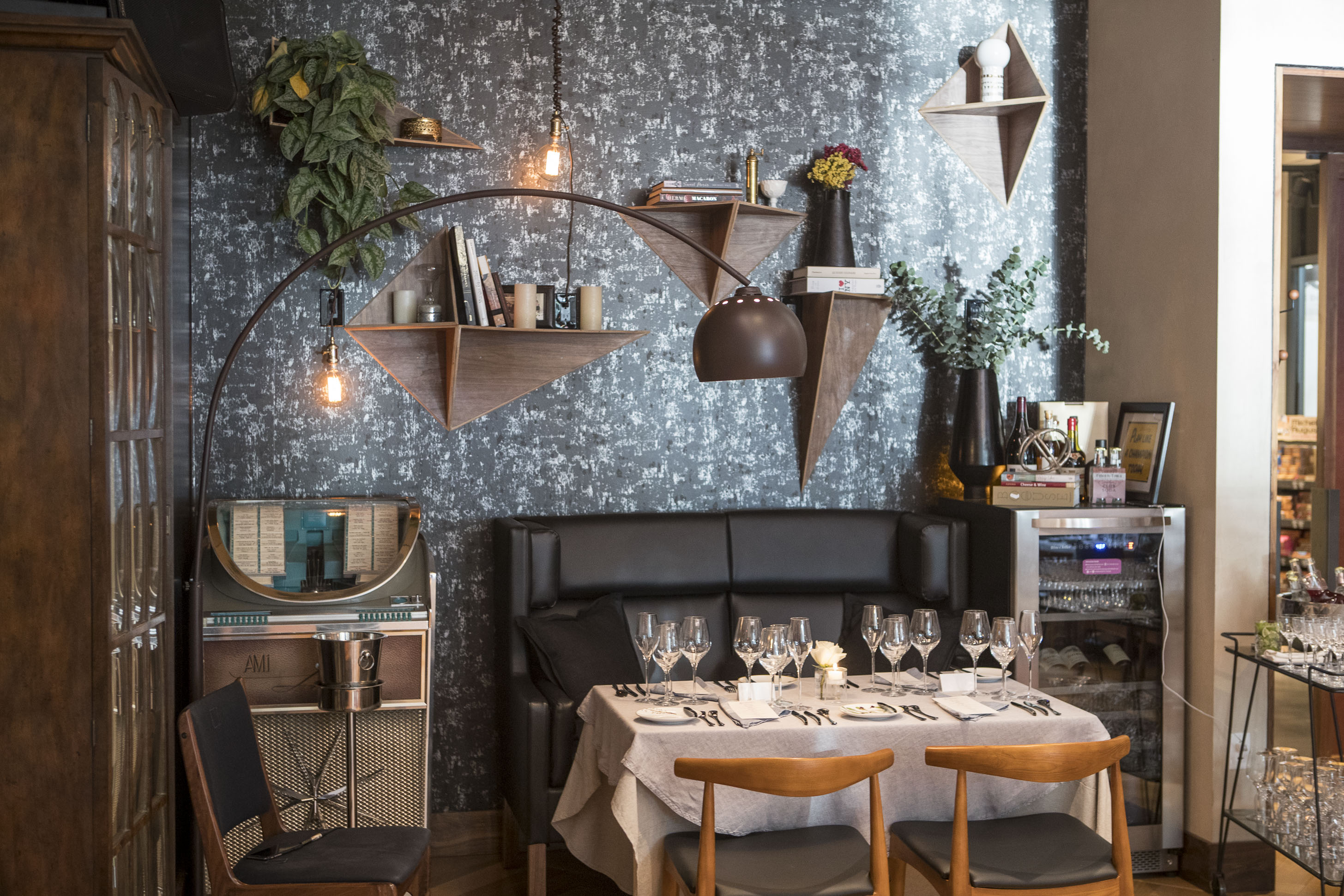Inside the Fine Dining Restaurant Tucked Into a Food Hall

Photo Caption: New York's L'Appart has just 10 tables, allowing for ultimate personalization.
Skift Take
The unique business of fine dining operations allows elements of service that are good business decisions to also translate into exceptional experiences for diners.
The business of fine dining, largely defined by its chefs and cuisine, has its own challenges. While diners accept a higher price point in exchange for quality and service, higher food and labor costs challenge restaurants to maintain the right balance.
This is our second look inside a fine dining restaurant to dive deeper into the unique challenges and operational strategies of running these unique businesses. Read the first, an interview with chef Gabriel Kreuther, here.
Tucked inside Le District, a French-inspired food hall in New York City, is L’Appart, which serves Michelin-starred cuisine in an intimate space designed to evoke a friend’s apartment, if that friend happened to be an insanely talented chef.
L’Appart is able to tailor the menu to each guest’s preferences thanks to maître d’ David Coucke, who discusses the experience with each diner before they arrive; chef Nicolas “Nico” Abello, who helms the kitchen; and the fact that the entire space has only 10 tables.
The meal typically progresses in a tasting-menu-style format, which is priced at $150, with wine pairings an additional $90. L’Appart veers somewhat from a traditional tasting menu because of the flexibility it offers, something Lucie Rizzi, Director of Branding & Business Development for Le District and L'Appart, says gets diners to come back.
Rizzi recently discussed the business of running L’Appart with Skift Table.
Location and Size Matter
L’Appart is part of the larger Le District food hall concept, which is owned by the New York City-based HPH hospitality group. The restaurant itself doesn’t pay additional rent to the food hall. The company’s portfolio includes a bevy of smart restaurants and bars, such as The Dead Rabbit, Harry’s, BlackTail and Financier Patisserie. L’Appart is also swept up in the rising tide of the Financial District, which has seen luxury apartment buildings and hotels rise, and with them restaurants.
The restaurant’s small size gives it some advantages — namely, greater flexibility. The entire experience is curated to the diner’s wishes, which not only helps raise the odds of a happy customer, but repeat visits as well. "We really try to curate an experience for the guests," Rizzi said. "I think that’s also a strength in the fine-dining landscape." We’ve seen this sentiment echoed across other restaurants as they work to craft exceptional in-person experiences — the kind people want to share with their friends.
But a small size also means having a firm policy about no-shows, which can have a bigger impact on a small establishment. For L’Appart that means a $50 no-show charge per guest for cancellations within 48 hours. "We knew that we couldn’t really afford any no-shows," Rizzi said. The restaurant does take a hit on no-shows, even after the surcharge, in part due to the quality of ingredients on the plate. But, thanks to the policy of speaking personally to each guest, the actual rate of no-shows is quite small. “That first point of contact is key,” she added.
Value Is More Than Cost Savings
L’Appart works hard to maintain its Michelin star, and is eyeing a second, so each of the roughly 12 employees (six in the front of the house and six in the kitchen) must constantly be on their game. That also means that labor is the second-highest cost of doing business for L’Appart. "We need to hire knowledgeable staff, not only with the food we serve, but also wine," Rizzi said.
Chef Abello essentially has free reign over the menu, and he places a premium on the highest quality ingredients, a perk of the fine-dining landscape.. That makes food costs the highest expense for L’Appart, unlike many other restaurants, where payroll tops the list. But being nestled inside Le District has its perks, namely a slew of pristine ingredients and artisanal products such as cheese and bread. "If you dine with us, you’ll see the baker sometimes in his outfit coming from the restaurant bringing fresh, hot bread," Rizzi said. Abello also manages costs by cutting out the middleman and going directly to the source for ingredients.
Change Is Great
Frequently changing the menu, about once a month, can not only help attract repeat diners, but also serves as a form of marketing. L’Appart additionally creates menus for holidays and special occasions. For instance, a Valentine’s Day menu, priced at $195 per person and an additional $110 for wine pairings, included Wagyu beef tartare, wild turbot, squab and chocolate tart. L’Appart also hosts winemaker-focused dinners, most recently with Mugnier wines, featuring a four-course tasting menu including Hudson Valley foie gras and Muscovy duck, priced at $250 per person.
Skift Table contributor Marcella Veneziale is a journalist and editor based in Zagreb, Croatia. For the past six-plus years, her work has focused on food and the business of restaurants.
